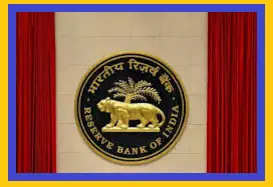📝 RBI Interest Rate Decision 2025: Central Bank Likely to Hold Amid Inflation Worries
As the RBI Interest Rate Decision 2025 draws near, all eyes are on the upcoming Monetary Policy Committee (MPC) meeting scheduled for this week. Economists and financial markets widely expect the Reserve Bank of India (RBI) to maintain the current interest rates, holding off on any cuts or hikes due to persistent concerns around rising inflation, particularly in food prices.
📈 Why RBI Might Hit the Pause Button on Rate Changes
Over the past few months, food inflation has climbed sharply, driven by erratic monsoons, supply chain disruptions, and global commodity volatility. Prices of essentials like vegetables, pulses, and cereals have surged across Indian households, tightening consumer wallets.
The RBI, known for its cautious and data-driven approach, is unlikely to take any aggressive steps that could further stoke inflation. Instead, a status quo in repo rate is the most probable outcome of the upcoming policy review.
💼 Current Policy Landscape: What’s at Stake
The RBI’s current repo rate stands at 6.50%, unchanged since February 2023. While inflation has remained within the RBI’s 2–6% comfort range for much of 2024, the recent spike in food inflation has altered the narrative.
Key reasons why the RBI may hold rates:
Uncertain monsoon outlook affecting agricultural output
High retail inflation at risk of breaching RBI’s upper limit
Global economic headwinds including oil price volatility
Upcoming festive season, which may push up demand and prices further
📊 What Does This Mean for the Common Man and Markets?
For the average Indian, a rate hold means:
Loan EMIs (home, personal, auto) likely to stay the same
No immediate change in deposit interest rates
Higher prices at grocery stores may continue, especially for essentials
For markets and investors:
A steady rate would signal RBI’s focus on inflation control
Equity markets may respond positively to stability
Bond yields could remain range-bound as liquidity remains neutral
🏛️ MPC’s Balancing Act: Inflation vs. Growth
The RBI Interest Rate Decision 2025 comes at a delicate juncture. While inflation is a top concern, the central bank is also mindful of supporting India’s growth momentum. With GDP growth forecasts holding strong, the RBI does not want to choke economic recovery through tighter monetary policy — but also can’t afford to stoke inflation.
This balancing act between price stability and growth makes the MPC’s decision highly consequential.

🌐 Global Context Matters Too
Globally, central banks like the US Federal Reserve and European Central Bank are also treading cautiously, with interest rates staying high amid inflation uncertainties. The RBI is expected to align with this cautious global stance, ensuring that capital flows and currency stability are not disturbed.
📢 Conclusion: RBI’s Patience Signals Policy Caution in Uncertain Times
The upcoming RBI Interest Rate Decision 2025 is not just about numbers — it’s about navigating India’s complex economic realities with restraint and foresight. By keeping rates on hold, the RBI is expected to send a clear message: inflation remains the top priority, and premature moves could risk more harm than good.
For now, patience is the policy. And the markets — along with the aam aadmi — will be watching closely.
📌 FAQ on RBI Interest Rate Decision 2025: Central Bank Likely to Hold Amid Inflation Worries
1. What is the RBI Interest Rate Decision 2025 about?
It refers to the Reserve Bank of India’s upcoming decision on whether to change or maintain key interest rates during its Monetary Policy Committee (MPC) meeting in 2025. This decision impacts borrowing costs, loans, and overall economic activity in India.
2. What is the current repo rate?
As of now, the RBI’s repo rate stands at 6.50%, unchanged since February 2023.
3. Why is the RBI expected to keep interest rates unchanged?
Due to rising food inflation and overall price volatility, the RBI is likely to hold rates steady to avoid adding further pressure on prices and to maintain economic stability.
4. What is causing the recent spike in inflation?
The rise in inflation, especially food prices, is driven by:
Irregular monsoon and poor crop yields
Supply chain disruptions
Global commodity price fluctuations
Higher costs of essentials like vegetables, pulses, and cooking oil
5. How does the RBI control inflation?
The RBI controls inflation through monetary policy tools like the repo rate (the rate at which it lends money to commercial banks). Raising rates can cool inflation, while lowering rates can boost growth.
6. What impact does the RBI’s rate decision have on EMIs and loans?
If rates are held:
Loan EMIs for home, personal, and car loans remain unchanged
Fixed deposit rates are unlikely to increase
Borrowing costs stay stable for individuals and businesses
7. Will this decision affect the Indian stock market?
Yes. A status quo on interest rates may be seen as a positive signal by equity markets, as it maintains liquidity while showing a cautious stance on inflation. However, high inflation may temper investor sentiment.
8. How often does the RBI announce interest rate decisions?
The Monetary Policy Committee (MPC) meets every two months, i.e., six times a year, to review economic conditions and set interest rates accordingly.
9. What is the RBI’s inflation target?
The RBI’s comfort zone for inflation is between 2% and 6%. If inflation stays above this band, the central bank may take corrective actions like raising interest rates.
10. What can we expect next after the RBI’s decision?
If inflation remains elevated, the RBI may:
Maintain rates for a longer duration
Tighten policy if price pressures worsen
Wait for clearer data before making any cuts
The next few months will be key in determining whether India’s inflation eases or escalates further.




